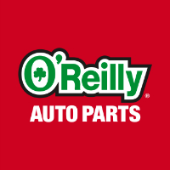-
Welcome to Auto Parts Forum
Whether you are a veteran automotive parts guru or just someone looking for some quick auto parts advice, register today and start a new topic in our forum. Registration is free and you can even sign up with social network platforms such as Facebook, X, and LinkedIn.
How To Clean Transmission Steering and Hydraulic Systems - Sea Foam
-
Similar Content
-
- 0 replies
- 33 views
-
- 0 replies
- 46 views
-
- 0 replies
- 56 views
-
- 0 replies
- 57 views
-
- 0 replies
- 51 views
-
-
Similar Topics
-
By Counterman
The fuel system, as a whole, is responsible for delivering fuel from the tank to the engine, then metering it into the combustion chamber. It consists of the tank, the lines, the pump and the metering device. If only it was as simple as it sounds. The challenge lies in the continual changes over the last century, and how the frequency of changes has increased over recent decades.
The heart and identity of any fuel system is the metering device or system that controls the flow of fuel into an engine. As a counter professional, you’re going to hear it all, and you’ll have to answer it all, so here’s a rundown on the major changes and differences over the years.
Carburetion Systems
A carburetor is a basic mechanical device, and the primary metering device used on the earliest automobiles. Carburetors held their ground until the late 1980s, when the last examples were eventually replaced by fuel injection. The job of a carburetor is to not only meter the fuel but also to properly mix it with the air flowing into the engine through the process of atomization.
As the automotive industry began to migrate to fuel injection, a knee-jerk reaction opposing fuel injection ensued. We were familiar with carburetors, and liked the fact that they were mechanical devices that could be repaired and rebuilt using basic hand tools, and there were no electronics involved. Regardless of who made the carburetor or what style it was, an experienced technician could diagnose and repair a problem without the need for service information, scan tools or electronics.
Though considered “simple,” carburetors are more complicated than they seem, with multiple different circuits to manage all aspects of engine operation. “Tuning” a carburetor – the art of balancing performance, efficiency and drivability – takes a considerable knowledge of engine operating principles, and the patience and precision to get it right.
The majority of carbureted vehicles utilize mechanical fuel pumps, driven off the engine. This too adds to the attraction of these vehicles, as again there were no electronics involved. The drawback to carburetors came in their lack of ability for precise fuel control. They simply couldn’t keep up with the tightening noose of emission and fuel-economy standards that was in full force by the 1970s. As the end of their use in production automobiles came near, some electronics were incorporated into them, but ultimately proved ineffective.
Today, any professional will admit – regardless of complexity – that fuel injection is simply superior and necessary. However, carburetion is still popular on old vehicles, partly because of its relative simplicity, but also due to the popularity of restoring old cars to their original state. While far from commonplace, carburetor rebuild kits aren’t going away anytime soon.
Fuel-Injection Systems
The advantage of fuel injection is the ability to precisely control fuel delivery under all operating conditions. Not only is this a necessity for emissions and fuel economy, but it also has a major advantage in drivability – an operational attribute that goes hand in hand with efficiency and performance.
Attempts at fuel injection are as old as the internal combustion engine itself, but in the early days, too many bugs made it undependable. By the 1950s, substantial engineering efforts were applied to develop fuel injection, both in the United States and Europe. One of the more well-known systems was the original Rochester fuel injection developed by Chevrolet for the 1957 Chevrolet and Corvette.
The idea behind developing this fuel injection wasn’t in the interest of horsepower or emission control. It was drivability, with the goal to eliminate the undesirable and unavoidable attributes of a carburetor, including fuel slosh in the fuel bowl and the transition between primary and secondary circuits. As you may expect, racers played a substantial part in all this, and the best part is they were very successful, and it unlocked horsepower as well!
The Rochester fuel-injection system was available from 1957 through 1965, but it ultimately failed for only one reason: cost. It was an expensive option, and with the muscle-car wars in full force and much higher-horsepower carbureted engines available for a fraction of the cost, nobody was buying.
By the late 1970s, fuel injection was better-developed, and this time emissions and fuel economy played a strong part. It began its rise to the top, and thanks to the advancements in electronic and computer technology, it got there quick. By the early 1990s, carburetion was all but gone from production automobiles.
Fuel-injection systems can be separated into multiple categories and types, and since you’ll hear multiple terms, here’s how to tell them apart.
Mechanical Fuel Injection
Early gasoline fuel-injection systems were mechanical. The pumps were mechanical, and fuel was delivered directly to nozzles located in the intake manifold. The pressure of the fuel caused the fuel injectors to open. A type of air meter was necessary, but early systems relied primarily on vacuum signals or mechanical linkage between the air meter and fuel-distribution meter to determine the proper amount of fuel. Very minimal if any electronics were involved in these systems.
Early diesel fuel-injection systems were purely mechanical as well, but the difference was the required fuel pressure. It doesn’t require much pressure to inject fuel into an intake manifold, but it requires extremely high pressure to inject fuel directly into a cylinder (such as is necessary for a diesel). Diesel-injection pumps housed a mechanical high-pressure pump to feed the fuel to the injectors.
One of the most common gasoline fuel-injection systems to become popular beginning in the late 1970s was the Bosch Continuous Injection System (CIS). This, too, was overall a mechanical system, but an electric pump supplied the fuel, and minor electronics played a part in cold-start functions as well as fuel-mixture control.
Electronic Fuel Injection
Electronic fuel injection was a terminology that became well-known in the 1980s and was often indicated by the letters “EFI” on the back of a car. It seemed revolutionary at the time, and it indicated that the systems were now completely electronically controlled. It was this point in time when fuel pumps found their way into the gas tank; injectors were basically solenoids that opened the injector upon command from a computer; and the computer – along with a myriad of sensors – controlled everything surrounding the operation of the system.
Even though EFI was an early term that would now be as redundant as saying you have antilock brakes on a new car, it’s technically still an accurate term. It’s just not used often because it’s assumed – and correctly – that everything on a new car is tied to electronics. EFI is a term that can include many different types of fuel injection.
Throttle-Body Injection
Throttle-body injection (TBI) refers to the fuel injector(s) being located in a throttle body that looks almost like a carburetor at a glance. This was done by design, as it was the most efficient and quickest way for auto manufacturers to make the change to fuel injection, while utilizing many of the same components they already had such as the same intake manifolds and air cleaners. TBI was most common in the 1980s and early 1990s.
We’ve always loved fancy names. Have you ever heard of cross-fire injection? It was two throttle bodies at opposite corners of the intake manifold.
Port Fuel Injection
TBI was at a disadvantage because airflow was interrupted by the injector, and port injection was the next advancement in line. Port, or multi-point injection injects fuel into the intake runner just before the intake valve for each cylinder. The advantage is the ability to precisely control the fuel delivery and balance the airflow into each cylinder, leading to increased power output and improved fuel economy.
Early mechanical fuel-injection systems were port-injection systems, sans electronic control. Seem confusing? Many fuel-injection terms cross over from new to old technology. There are just so many manufacturer-specific names that it can be confusing! Like EFI, port injection was widely advertised as the latest greatest advancement, with tuned port injection topping the performance charts. Port injection still is the most common type of fuel injection used today, but when was the last time you saw it called out? Nobody really says it anymore because it’s not new. But there’s another technology that we’re not done talking about, and that’s direct injection.
Direct Injection
Direct means the fuel is injected directly into the combustion chamber. Direct injection has been around for years in the diesel world, but it’s still relatively new for gasoline engines. The challenge with this type of injection is injecting the fuel into the high compression of the combustion chamber. Just like a diesel, it requires extremely high fuel pressure, and gasoline direct injection utilizes a typical electric pump to supply fuel to the rail, plus a mechanically driven high-pressure fuel pump to supply the necessary pressure for injection.
The primary advantage of direct injection is that there’s less time for the air/fuel mixture to heat up since the fuel isn’t injected in the cylinder until immediately before combustion. This reduces the chance of detonation, or the fuel igniting from the heat and pressure in the cylinder. This allows a direct-injected engine to have higher compression, which itself lends to higher performance.
There are additional advantages of reduced emissions and better fuel economy, but there also are some now-familiar drawbacks, including carbon buildup on the backs of the intake valves, low speed pre-ignition and limited high-rpm performance. For this reason, many manufacturers are combining both direct- and port-injection systems.
The post
link hidden, please login to view appeared first on link hidden, please login to view.
link hidden, please login to view -
By Counterman
KYB said it has developed an environmentally friendly hydraulic fluid for shock absorbers.
The newly developed SustainaLubeliminates the environmental risks associated with petroleum, according to KYB. The
Full release to the market is planned for 2026.
The new fluid contributes to carbon neutrality by switching from petroleum-derived base oil to naturally derived base oil. It absorbs CO2 from the atmosphere during cultivation of the plants used for the base-oil raw materials, also reducing CO2 emissions during transportation, according to KYB.
SustainaLub is biodegradable up to 60% or more according to the Eco Mark certification standard (OECD301). The base-oil and additive formulation is recyclable, reducing environmental issues in the long term, KYB noted.
“As a specialized global manufacturer of hydraulic equipment, KYB has long been involved in maintaining and improving the safety and comfort of automobiles,” the company said in a news release. “Using that experience, we are striving to achieve environmental balance without compromising performance or reliability. Not only does SustainaLub improve maneuverability and stability by applying it to the various damping force valves that we already offer, but it also improves the feel of the product by applying friction-control technology, for example KYB Prosmooth shock absorbers.”
Replacing petroleum-based oil in KYB shock absorbers with this new hydraulic fluid will save up to 15.6 million liters of oil per year, according to KYB.
Tested in Japan
All new KYB products undergo reliability evaluation at the KYB Development Center in Japan.
“Thorough performance and quality evaluation involves both bench tests and actual vehicle testing on our state-of-the-art test track,” KYB said. “This in-house design of a hydraulic oil recipe is unique to a manufacturer specializing in shock absorbers.”
The KYB team participating in the All Japan Rally Championship JN-2 class introduced SustainaLub to their vehicles from Round 6 onwards They analyzed and verified the performance and durability in the harsh race environment, KYB noted.
In addition, SustainaLub was trialed in the vehicle used in the Lexus ROV (Recreational off-Highway Vehicle) Concept customer-experience program. It was used for Lexus’s first ROV equipped with a hydrogen engine. The data accumulated also contributes to technology development for future practical applications, and work toward the realization of a carbon-neutral society.
“KYB plans to ultimately apply the technology to all hydraulic products involved in realizing a sustainable mobility society,” the company said. “As a specialized manufacturer of hydraulic equipment, KYB has long been working to improve the ride comfort and handling stability of automobiles. Based on this experience, KYB will continue to pursue advances in performance and reliability while keeping environmental impact at the forefront of development.”
The post
link hidden, please login to view appeared first on link hidden, please login to view.
link hidden, please login to view 
-
By Counterman
Transtar Industries announced the launch of its newest brand, Transmaxx, a line of customer-driven remanufactured transmission products.
Transtar partnered with ETE REMAN to launch three remanufactured-transmission electro-hydraulic control modules (TEHCMs) designed for General Motors six-speed-transmission applications.
Backed by a one-year unlimited warranty administered by ATSG, “each TEHCM is meticulously repurposed to ensure optimum performance and reliability,” according to Transtar.
“Our focus with Transmaxx is to bring to market-innovative remanufactured product solutions not currently available that solve customer repair shop needs,” said Neil Sethi, president and CEO of Transtar Holding Co. “Coupled with the backing of world-class organizations like ETE REMAN and ATSG and adding innovative technology solutions like Transtar RAP kit and Transend online ordering, we are very excited about evolving Transmaxx to become the go-to reman transmission brand for a broad array of product solutions.”
The product, along with the Transtar RAP kit for reprogramming, offers a complete repair solution for TEHCM needs, Transtar asserted.
“We’ve enjoyed a long and mutually beneficial partnership with Transtar. We can’t think of a better partner to launch our first TEHCM product offering,” said Noah Rickun, CEO of ETE REMAN. “Our commitment to quality sets us apart in the automotive aftermarket industry, and Transmaxx will offer the ultimate remanufactured product experience that only Transtar can provide.”
Transmaxx will be available exclusively at all Transtar, King-O-Matic and Transmart locations across North America and available online at Transend.
The post
link hidden, please login to view appeared first on link hidden, please login to view.
link hidden, please login to view




Recommended Posts
Join the conversation
You can post now and register later. If you have an account, sign in now to post with your account.
Note: Your post will require moderator approval before it will be visible.